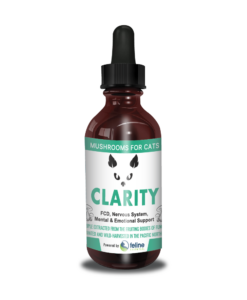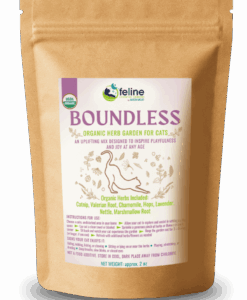Hyperthyroidism in cats has become an epidemic. In the 1980s, 1 in 200 cats were diagnosed with hyperthyroidism. Today that number is 1 in 10 cats. So what’s changed since the 1980s?
We all know that the processed foods we feed our cats contribute to a number of epidemics for our household cats. If you only ate highly processed foods your whole life, you’d likely end up with diseases as well. Since we’ve brought our cats indoors, the quality of food they consume has greatly decreased. Mice, rabbits and birds are a much healthier diet than the kibble that 93% of cat parents feed.
What Else Causes Hyperthyroidism In Cats?
Scientists wanted to take a deeper look into this sudden rise of hyperthyroidism in cats. The findings of their research studies are very interesting! It turns out that there’s more than just processed foods involved in the epidemic of feline hyperthyroidism since the 80s.
Here are 3 scientific findings that also lead to hyperthyroidism in cats:
- Exposure to chemical flame retardants in household furniture. I’m sure you’re like “what???”. I was too. But if you read the research study they performed at Oregon State University, it makes sense. Starting in the 1980s furniture companies began spraying flame retardants on their new furniture so that our couches would be less flammable. They recreated this chemical into a cat collar tag and ran tests on the thyroid of 78 cats wearing them. “The research found that even in healthy cats, higher TDCIPP levels were correlated with thyroid hormone levels.”. Before you throw your couch out on the curb, keep reading for some of our suggestions regarding flame retardant furniture.
- BPA in pop-top canned food. I think it’s no surprise that BPA is a contributor to hyperthyroidism and other ailments, as it made national news years ago. However, this research was quite eye-opening. As it turns out, even canned food that says “BPA Free” on it can still contain BPA chemicals in the pop-top lid! “One large study of control and hyperthyroid cats demonstrated an association between hyperthyroidism and cats fed food from “pop-top” cans (12). Results of that study suggested that overall consumption of pop-top canned food at various times throughout a cat’s life was associated with greater risk of developing hyperthyroidism.“
- Iodine In Cat Food. This specific study, released by PubMed Central, showed that thyroid levels normalized in a large percentage of cats that had hyperthyroidism after feeding an iodine-restricted diet for 2-6 months. This is both good and bad news. Fish flavored foods are high in iodine and many of us have picky cats that love fish! However, if we can stay away from the iodine rich foods we can help avoid hyperthyroidism.
Once we know better, we can do better.
While it may seem overwhelming, there are ways we can help our cats be healthier using the research above. Put blankets on the furniture where your cats lay. So many awesome pet food companies are now selling their wet cat food in pouches rather than metal. Diversify the proteins you feed your kitties, so they aren’t eating iodine-rich foods regularly. And stay away from the highly processed kibble as much as possible. Feeding your cat a species appropriate diet can help avoid so many feline ailments.




Recent Comments